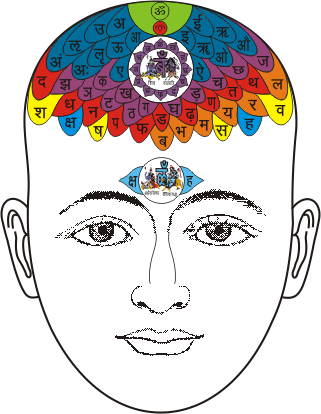Dr MS Chauhan
Mantra’s
Mantra’s relation to the head

In ancient time the yogis and mystics had the ability and power to foresee what was wrong in the body when you visited them for their guidance. So they picked up words from each chakra and combined them and gave them to people to recite and make them reach their goal in life and to cure their diseases.
Each Chakra has an inherent vibration, the sound of which is reflected in an alphabet (Akshar). These alphabets form Beejakshar, which is the basis of formation of Mantras that were given by Rishis to people as remedial measures. The Supernatural Power and vision possessed by Rishis enabled them to instantly see the location of the affected Chakra / Petal. The combinations of related alphabets (Beejakshar) of these Chakras / Petals were given as Mantras for recitation that immediately brought relief to the ailments. All these Beej-akshars correspond to 51 Shakti Peeths. These Peeths are the places where the parts of Lord Shiva's first wife - Sati fell on the Earth. Each created a Peeth and a corresponding sound as they fell.
Each of the almost sixty Akshars correspond to a particular petal of the nine Chakras and each also has a corresponding command centre on the front part of the head, which is a part of Sahasrar Chakra. It is only when the Akshar cannot be recited, i.e., when the patient is in a coma, then in order to revive the patient, a pressure point is applied at the specific command centre of the Beejakshar in the head region with a specific instrument made of crystal quartz oscillating at a frequency of 1 to 20 kHz.
©2010 MS Group All rights reserved.